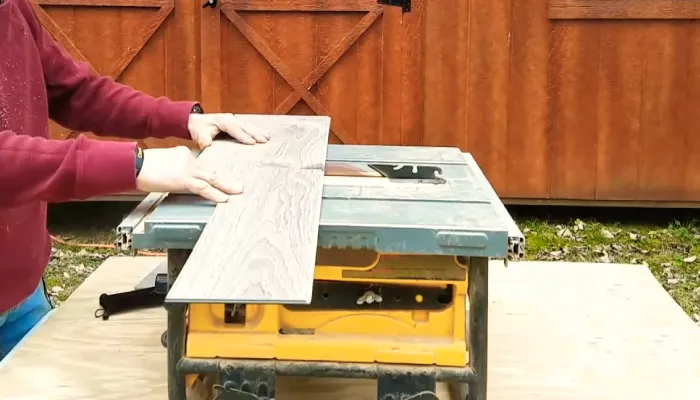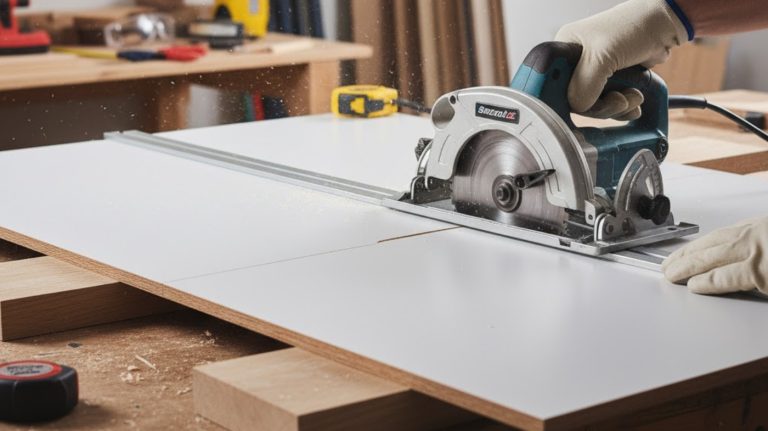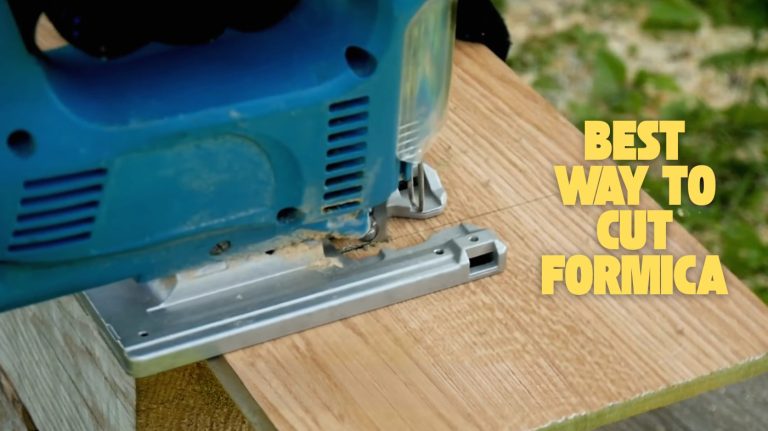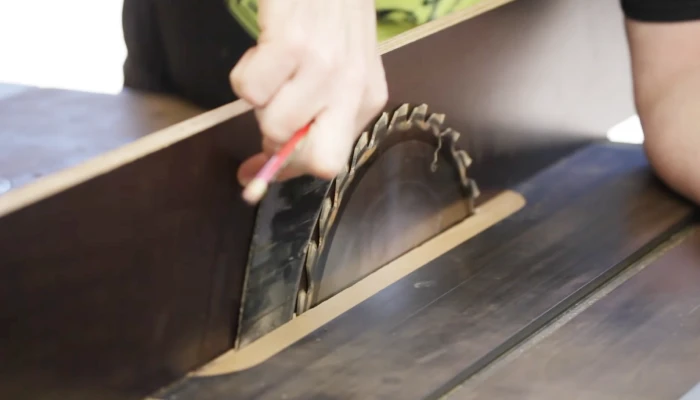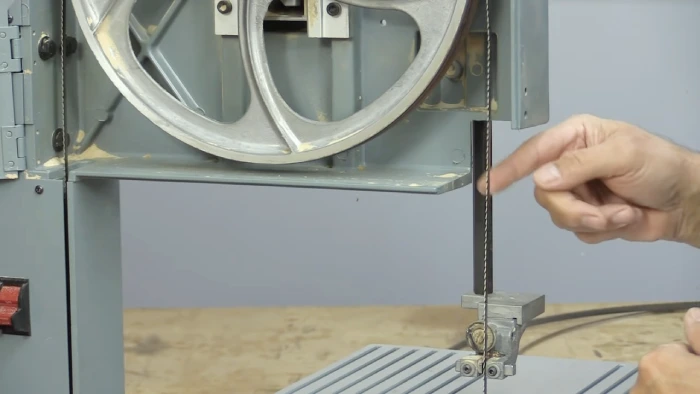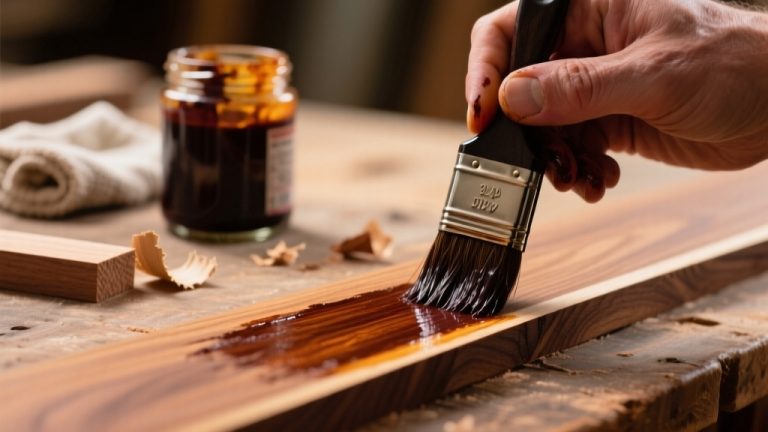Can You Cut Vinyl Flooring with a Table Saw: Find the Truth
Vinyl flooring, known for its durability and versatility, has become a popular choice for homeowners. But when considering cutting, can a table saw be a powerful ally in providing clean and precise cuts?
Well, the answer is a resounding yes. You can easily cut vinyl flooring using a table saw like wood or MDF. A table saw is the most efficient option when ripping the vinyl flooring to length. The table saw’s straight and precise cuts ensure a clean and professional finish.
As part of this article, I’ll explain how to effectively cut vinyl flooring using a table saw while considering important factors and ensuring blade longevity. Let’s cut vinyl floor cutting with confidence.
How to Cut Vinyl Flooring With a Table Saw: Steps to Follow
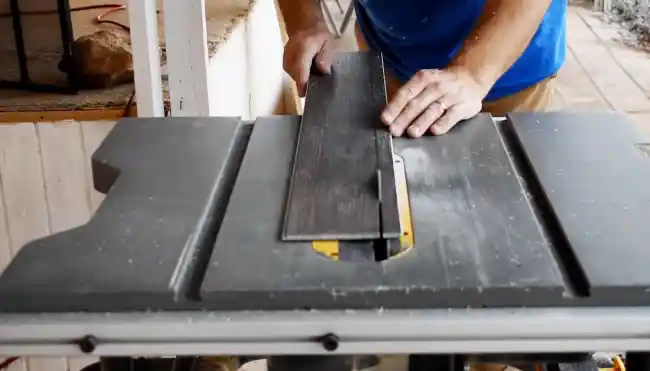
I’ve listed four primary steps you need to follow to cut vinyl flooring using a table saw.
- Prepare the vinyl plank and work area
- Set up your table saw
- Make precise cuts with the table saw
- Clean-up and final considerations
Step 1: Prepare the Vinyl Plank and Work Area
Gather all the necessary tools and materials for cutting vinyl flooring using a table saw. You’ll need a tape measure, a speed square, and a table saw with a fine-toothed blade suitable for cutting vinyl. Clear the work area of any clutter or obstacles to ensure a safe and efficient cutting process.
Use a tape measure and a speed square to measure and mark the vinyl plank accurately according to the desired length or width. Double-check your measurements before making any cuts to avoid any mistakes. You should avoid wearing gloves when using a table saw since the blade can be very sharp.
Step 2: Set Up Your Table Saw
To properly cut vinyl flooring using a table saw, properly set up the table saw correctly. Start by installing the appropriate blade for vinyl flooring on the saw. This specialized blade is designed to minimize chipping and tearing of the vinyl material.
Next, set up guide rails or fences to ensure the vinyl plank is aligned correctly during cutting. These guides will help you achieve straight and accurate cuts.
Also, adjust the saw’s depth to match the thickness of the vinyl flooring and ensure its sharpness. This will prevent the saw from cutting too deeply or not deeply enough, resulting in uneven cuts.
Step 3: Make Precise Cuts with the Table Saw
Continuing from the previous subtopic, to ensure a precise cut with the table saw when cutting vinyl flooring, align the marked cutting line with the saw blade and secure the vinyl plank against the guide rails or fences. This will help to minimize the risk of any errors or damage to the vinyl plank.
While cutting, maintain a slow and steady pace, considering the material’s thickness. By doing so, you can ensure that the cut is clean and accurate.
Removing waste material is important to maintain a clean and safe work environment. This will also prevent debris from interfering with the cutting process and causing errors.
Step 4: Clean-Up and Final Considerations
As you complete the precise cuts with the table saw, clean up promptly and consider a few final points when cutting vinyl flooring. After finishing the cuts, removing any remaining vinyl dust promptly is important. This can be done by using a dust collector or a vacuum cleaner.
Properly storing your tools is also essential for future use. Keeping them organized and protected will help maintain their longevity.
Additionally, take the time to reflect on the advantages and disadvantages of using a table saw for your specific project. Consider factors such as accuracy, efficiency, and safety.
What to Consider When Cutting Vinyl Flooring with a Table Saw?
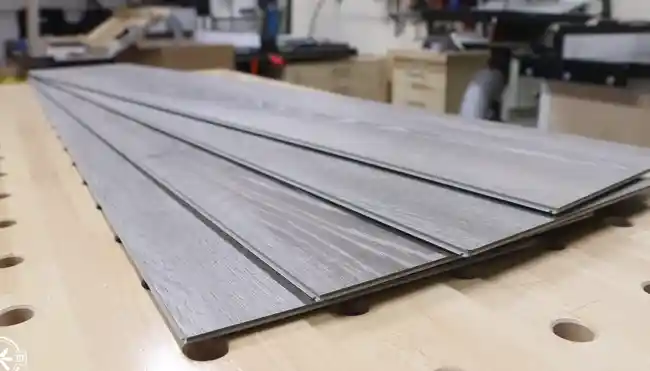
When cutting vinyl flooring using a table saw, there are several factors to consider.
Type of Vinyl Flooring
While cutting vinyl flooring using a table saw, consider the type of vinyl flooring used. Different types of vinyl flooring, such as
- Laminate Vinyl Flooring (LVF),
- Luxury Vinyl Tile/Plank (LVT/LVP),
- Solid Core Vinyl Planks (SCVP) and
- Sheet Vinyl Flooring (SVF),
have varying thicknesses and compositions. These differences can affect the cutting process.
For example, LVF and LVT/LVP are typically thinner and easily cut with a standard table saw blade. However, SCVP and SVF are thicker and may require a specialized blade with a higher tooth count to ensure clean and precise cuts.
Additionally, the composition of the vinyl flooring, such as whether it has a rigid or flexible core, can also impact the cutting technique. Therefore, identify the type of vinyl flooring and choose the appropriate saw blade and cutting technique accordingly.
Blade Selection
When cutting vinyl flooring with a table saw, blade selection is essential for ensuring clean & precise cuts and blade longevity. Sharp blades with a high tooth count are recommended for laminate vinyl flooring to minimize tearing and chipping.
However, diamond blades are more suitable for solid-core vinyl, such as luxury vinyl tile or plank. Diamond blades are designed to handle harder materials and can effectively cut through the rigid core of this type of vinyl flooring.
Also, carbide-tipped blades are often recommended for various vinyl types due to their durability and ability to withstand the rigors of cutting through vinyl materials.
Blade Sharpness
To ensure clean and precise cuts when cutting vinyl flooring using a table saw, I recommend prioritizing the sharpness of the blade. A sharp blade is essential for smooth, accurate cuts without tearing, melting, or creating uneven edges.
When the blade is dull, it can cause the vinyl to tear or melt, resulting in jagged edges and a compromised finish. Also, a dull blade may require more force to cut through the vinyl, leading to uneven cuts and potential damage to the material.
Regularly inspecting and maintaining the sharpness of the blade is crucial for achieving high-quality results when working with vinyl flooring. Sharpening or replacing the blade as needed will ensure optimal performance and minimize the risk of errors during the cutting process.
Cutting Speed & Applied Pressure
The cutting speed of the table saw should be adjusted to match the characteristics of the vinyl. It’s often advisable to use a slower speed for cleaner cuts. This allows the blade to glide smoothly through the material without causing damage or splintering.
Apply pressure consistently and moderately. Avoid using excessive force, as it can cause the vinyl to chip or splinter.
Cutting Depth
Consider adjusting the cutting depth to ensure proper cutting of vinyl flooring with a table saw. The cutting depth refers to how deep the saw blade cuts into the material. Correctly set the cutting depth to match the vinyl plank’s thickness.
If the cutting depth is too shallow, the blade may not cut through the material entirely, resulting in an incomplete or uneven cut. On the other hand, if the cutting depth is too deep, it can cause damage to the vinyl or even the table saw itself.
Measure the thickness of the vinyl plank accurately and adjust the cutting depth accordingly to achieve clean and precise cuts while avoiding any potential damage.
Material Alignment and Securing
A crucial step in cutting vinyl flooring using a table saw is to carefully align and secure the material in place. This ensures that the cuts are straight and accurate.
To align the vinyl plank, position it along the saw’s cutting path, ensuring it’s parallel to the blade. Use clamps or other securing methods to prevent movement during cutting. This is important because any shifting of the material can result in uneven cuts or jagged edges.
Does vinyl flooring dull table saw blades?
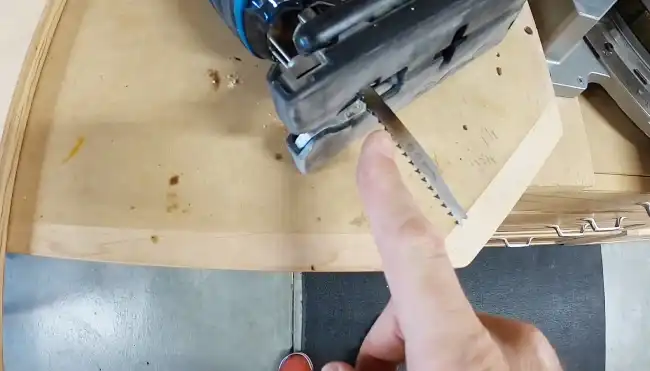
Cutting vinyl flooring with a table saw can dull its blades. Vinyl flooring comprises wood byproducts, melamine resin, and aluminum oxide, known to be abrasive materials. When the table saw blade comes into contact with these materials, the friction and pressure can cause the blade to wear down.
As the blade dulls, it becomes less effective at cutting through the vinyl flooring, resulting in slower and less precise cuts. The dull blade may also cause the vinyl flooring to splinter or chip, leading to a lower-quality finish.
To prevent blade dulling, I recommended using a blade specifically designed for cutting vinyl flooring or sharpening the blades to maintain optimal cutting performance regularly.
Can I use a standard blade on my table saw for cutting vinyl flooring?
While using a standard blade for cutting vinyl flooring is possible, it may not yield the best results. Standard blades typically have larger teeth and a higher tooth count, which can result in rough cuts and potential damage to the material.
Vinyl flooring requires a clean and precise cut to ensure proper installation, so using a fine-toothed blade or a carbide-tipped blade specifically designed for cutting vinyl is recommended.
These blades have smaller, more closely spaced teeth, which produce smoother cuts and reduce the risk of melting or gumming. Using the right blade for the job will help achieve cleaner, more accurate cuts when working with vinyl flooring on a table saw.
Cut Vinyl Flooring With Ease and Precision Using a Table Saw
Cutting vinyl flooring with a table saw can be convenient and efficient. However, consider the appropriate blade and take necessary precautions to prevent dulling.
If you follow the steps I described above, you can easily cut vinyl flooring using a table saw. Remember to choose the correct blade, measure accurately, and prioritize safety. So, seize the saw and swiftly slice through the vinyl for a seamless flooring finish.

